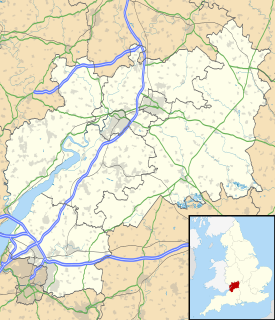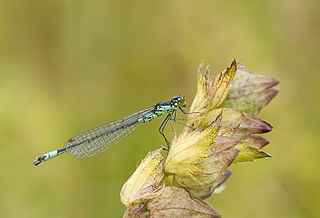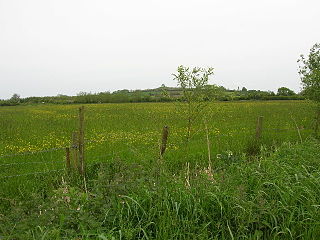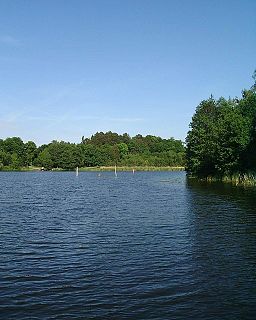| Site of Special Scientific Interest | |
 | |
| Area of Search | Somerset |
|---|---|
| Grid reference | ST420450 |
| Coordinates | 51°12′05″N2°49′54″W / 51.20125°N 2.83153°W Coordinates: 51°12′05″N2°49′54″W / 51.20125°N 2.83153°W |
| Interest | Biological |
| Area | 917.6 hectares (9.176 km2; 3.543 sq mi) |
| Notification | 1985 |
| Natural England website | |
Tealham and Tadham Moors (grid reference ST420450 ) is a 917.6 hectare (2267.3 acre) biological Site of Special Scientific Interest south of Wedmore in Somerset, notified in 1985.

The Ordnance Survey National Grid reference system is a system of geographic grid references used in Great Britain, distinct from latitude and longitude. It is often called British National Grid (BNG).

The hectare is an SI accepted metric system unit of area equal to a square with 100-metre sides, or 10,000 m2, and is primarily used in the measurement of land. There are 100 hectares in one square kilometre. An acre is about 0.405 hectare and one hectare contains about 2.47 acres.

Wedmore is a village and civil parish in the county of Somerset, England. It is situated on raised ground, in the Somerset Levels between the River Axe and River Brue, often called the Isle of Wedmore. It forms part of Sedgemoor district. The parish consists of three main villages: Wedmore, Blackford and Theale, with the 17 hamlets of Bagley, Blakeway, Clewer, Crickham, Cocklake, Heath House, Latcham, Little Ireland, Middle Stoughton, Mudgley, Panborough, Sand, Stoughton Cross, Washbrook, West End, West Ham and West Stoughton. The parish of Wedmore has a population of 3,318 according to the 2011 census.
Land south of this site is included in Catcott, Edington and Chilton Moors SSSI.
Tealham and Tadham Moors form part of the extensive grazing marsh and ditch systems of the Somerset Levels and Moors. The water table is high throughout the greater part of the year with winter flooding occurring annually, by over-topping of the River Brue. 113 aquatic and bankside vascular plant species have been recorded from the field ditches, rhynes and deep arterial watercourses. A diverse invertebrate fauna is associated in particular with ditches that have a good submerged plant community. The water beetle fauna is exceptionally rich, with the nationally rare species Hydrophilus piceus and Hydrochara caraboides together with the rare soldier flies Stratiomys furcata and Odontomyia ornata. Good numbers of dragonflies and damselflies occur including the Hairy Dragonfly (Brachytron pratense) and the Variable Damselfly (Coenagrion pulchellum). [1]

The Somerset Levels are a coastal plain and wetland area of Somerset, England, running south from the Mendips to the Blackdown Hills.

The River Brue originates in the parish of Brewham in Somerset, England, and reaches the sea some 50 kilometres (31 mi) west at Burnham-on-Sea. It originally took a different route from Glastonbury to the sea, but this was changed by Glastonbury Abbey in the twelfth century. The river provides an important drainage route for water from a low-lying area which is prone to flooding which man has tried to manage through rhynes, canals, artificial rivers and sluices for centuries.

Aquatic plants are plants that have adapted to living in aquatic environments. They are also referred to as hydrophytes or macrophytes. A macrophyte is an aquatic plant that grows in or near water and is either emergent, submergent, or floating, and includes helophytes. In lakes and rivers macrophytes provide cover for fish and substrate for aquatic invertebrates, produce oxygen, and act as food for some fish and wildlife.


















